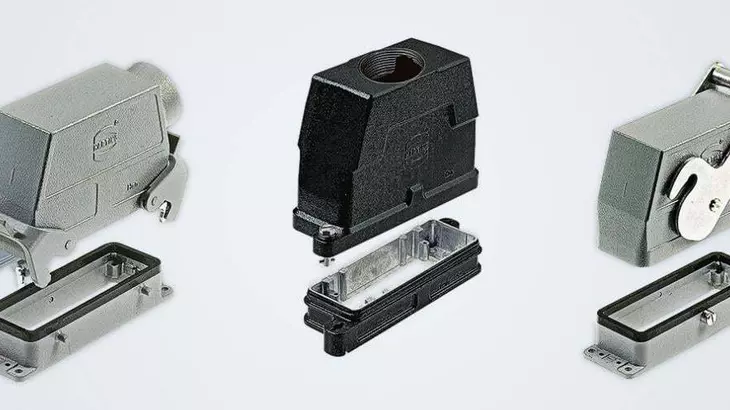Knowledge about lighting connectors
What are lighting connectors?
Lighting connectors (for industrial applications) enable the quick installation and operation of all types of light sources, while also offering the option of interrupting the connection between the power source and luminaire, for example for maintenance purposes or to replace and repair light sources.
What types of (industrial) lighting connectors are available?
2 to 5-pole mini or flat connectors in a plastic housing, for example, with screw or cage/tension spring connection, for the installation of compact lights or LED strips
Three-pole and multi-pole plug connectors (pin/socket), round or square, for high-performance lighting, for example, for halls, car parks or workshops (for wiring with a conductor cross-section of up to 4 mm²)
Industrial connectors in plastic or metal housings, assembled on the cable end or installed in the field (flying leads, the division into pin and socket enables the construction of larger "plug & play" cabling systems)
Housing and cable glands provide different degrees of protection between IP20 for indoor connection and IP65 for use in harsh industrial environments (e. g. tower lights for wind turbines)
How do lighting connectors work?
Connectors are components that consist of a few basic elements: Conductors, contacts, contact inserts, cables, cable adapters, housings and, possibly, seals. The contacts of the connectors are attached to the cable using various connection techniques (e.g. crimping, screwing, cage clamp). The contacts are inserted into the insulation body and integrated into the housing. Connectors are fitted with male and female contacts and can be connected to their counterparts to form an interface. This makes it possible to transport power, data and/or signals over the distances required to supply an infrastructure in a detachable manner at any time. A lighting system primarily requires power to light up the lamps. If additional signals or information are required, these can also be transported via cable systems with separable interfaces.
Who uses which lighting interfaces where?
For homes and offices, small to medium-sized connectors are used to connect LED lights and transformers to low-voltage systems
The automotive industry uses receptacles as well as two-pole and multi-pole flat connectors for wiring their vehicles, including interior lighting
Systems with larger connectors (round/rectangular) are used by the industry in a wide variety of ways: for connecting lighting in workshops, production halls and warehouses -
Smaller rectangular connectors can also be used for the plug-in and detachable connection of lighting: Just like distributors, they disappear inconspicuously into cable conducts.
What are the advantages of connectors for lighting systems?
Cabling and luminaires can be pre-assembled as far as possible. The plug & play principle reduces the amount of installation work on site and helps to avoid expensive call-outs by qualified electricians, even during operation
All pre-assembled systems can be tested before delivery, thus, lighting systems can be safely installed in the field - Intervention by unauthorised persons can be prevented by locking and coding systems
Power transmission can be carried out in parallel with signal and data transmission
High flexibility: Modular systems of inserts, contacts and accessories are created for numerous applications
Reduced installation times: Rapid installation is possible due to quick assembly technologies, screw connections are no longer necessary, or only to a limited extent
What should I look out for when choosing?
Taylor the specifications to your requirements: What voltages and currents do I need? What temperature range is required?
How large is my lighting system? How large can the distances between the interfaces be?
How large can the proportion of pre-assembly be? Which part of connections do I want to assemble in the field?
If you are transporting data or signals in parallel with the power for the luminaires: Check the use of shielded connectors!
Protect yourself against mismating by using suitable codings or securely locking the connectors
Consider the environmental impacts in the selected installation space: How high is humidity, salt content etc.? Do you need particularly corrosion-resistant solutions?
How often do you need to mate or unmate the supply system for the electrical lights? Do you need connectors with particularly high mating cycles (e.g. more than 500 times in the life cycle)? Then there are special connectors for this


